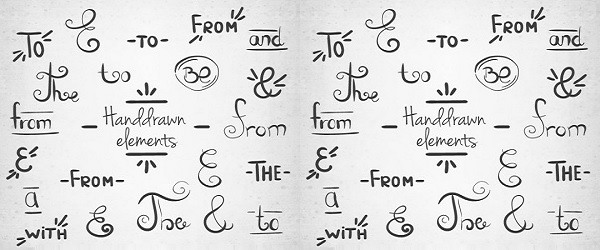
"Please" and "thank you" are polite ways of greeting and responding. "Please" is used to make a request, ask a question, or respond to a question in a more polite manner. It is also used to beg or plea for something. "Thank you" is used to respond to something in a more polite manner.
Please - Requests and Questions"Please" is used to make a request or ask a question in a more polite manner. "Please" is usually placed at the beginning or the end of a sentence. If "please" is placed at the end of the end of a sentence, put a comma before the word "please".When using the verbs can/could/would, "please" can be placed in the middle of a sentence. This makes the tone of the request stronger.
- Please call your parents right away.
- Call you parents right away, please.
- Could you please call your parents right away?
- Please hold the door.
- Hold the door, please.
- Could you please hold the door?
- Please pass the salt and pepper.
- Can you pass the salt and pepper, please?
- Can you please pass the salt and pepper?
- Please repeat that.
- Repeat that, please.
- Could you please repeat that?
Please - Responding to Questions"Please" is used to answer a question or respond to an action in a more polite manner. When answering with "please", it is placed at the end of the response. A comma is placed before the word "please".
- Would you like something to drink?
Yes, please. - What would you like to drink?
Water, please. - Would you like to watch some TV?
Yes, please. - What would you like to watch?
The football game, please.
Please - Encouraging or Begging"Please" is used to strongly state or ask for something. "Please" is also used to beg for something. "Please" is usually placed at the beginning or the end of a sentence. If "please" is placed at the end of the end of a sentence, put a comma before the word "please".
- Please help me!
- Help me, please!
- Please stop!
- Stop, please!
- Please don't do that.
- Don't do that, please.
- Please do.
- Please believe me.
Thank you - Different Degrees"Thank you" is used to respond to something in a more polite manner. There are different degrees of "thank you". "Thanks" is an informal form of "thank you". Words can also be added to "thank you" to make the response stronger such as "Thank you very much."
Informal Person A: I like your dress.
Person B: Thanks.
Formal Person A: I bought the tickets for you.
Person B: Thank you.
Stronger Person A: Your soup is delicious.
Person B: Thank you very much.
Thank you - Responding to Questions"Thank you" is used to respond to a question in a polite manner. Yes and No questions can be answered with "Yes, thank you". "No, thank you". If you respond with just "thank you", you are accepting the offer.
Yes Person A: Would you like a glass of water?
Person B: Yes, thank you.
Yes Person A: Would you like a ride?
Person B: Thank you.
No Person A: Do you want another slice of cake?
Person B: No, thank you.
Thank you - Showing Gratitude or Appreciation"Thank you" is used to show gratitude or appreciation.
Person A: I will call you a cab.
Person B: Thank you.
Thank you with "-ing" Verbs or Nouns"Thank you" can be used with "-ing" verbs or nouns. The word "for" is used after "thank you" and before the "-ing" verb or noun. "Thank you + for + gerund/noun".
- Thank you for helping me with my homework.
- Thanks for your help.
- Thanks for taking me home.
- Thank you for the ride.
- Thank you for listening to my story.
- Thank you for your time today.
Directions: Choose the correct answer.
1) Someone asks if you would like some coffee. You would like a cup of coffee. You say:
a. Yes, please.
b. Please do.
2) You're stuck in a tree! You yell:
a. No, please.
b. Please help me!
3) You're running to the elevator and the door is closing. You say:
a. Go, please.
b. Hold the elevator, please.
4) Your little brother keeps bugging you. You tell him:
a. Please stop!
b. Please do.
5) Someone helps you with your grocery bags. You say:
a. No, thanks.
b. Thank you!
6) Your friend is babysitting your child. You want to show appreciation. You say:
a. Thank you very much.
b. No, thanks.
7) The host offers you a glass of wine. You don't drink alcohol. You say:
a. Thank you very much.
b. No, thank you.
8) You're sick and hungry. Your roommate brings you food. You say:
a. Thank you for bringing me dinner.
b. Thank you for ignoring me.
Directions: Fill in the blanks with either "please" or "thank you"
1) __________ visit us again soon.
2) Could you __________ turn down the music?
3) __________ for coming to my party.
4) Call me, __________ .
5) __________ very much.
6) __________ for the beautiful flowers.
7) Come here, __________ .
8) Could you __________ pass the mashed potatoes?
9) No, __________ . I am full.
10) __________ . I had a lot of fun too.
Quiz 1 Answers
1) a. Yes, please.
2) b. Please help me!
3) b. Hold the elevator, please.
4) a. Please stop!
5) b. Thank you!
6) a. Thank you very much.
7) b. No, thank you.
8) a. Thank you for bringing me dinner.
Quiz 2 Answers
1) Please
2) please
3) Thank you
4) please
5) Thank you
6) Thank you
7) please
8) please
9) thank you
10) Thank you
 |  |